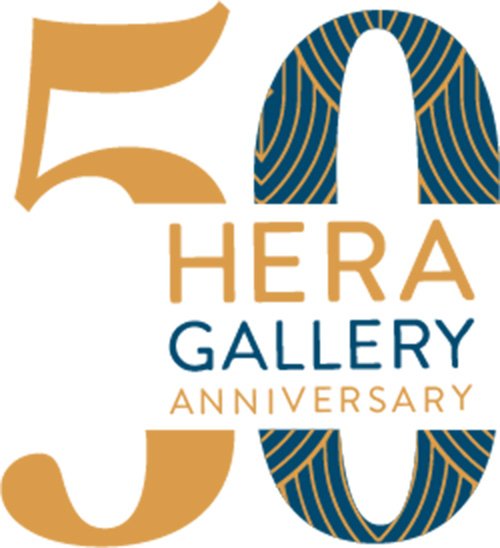New Work by Ed Ferszt
AND
Flux: Cycles of Change by Sarah Swift
March 3rd –March 31st, 2018
This two-person show exhibits the newest work by both artists, who are recent additions to the Hera Gallery Artist community. Both Rhode Island artists distinctively examine and depict natural elements like water and earth, gaining inspiration from the nearby ocean and rural terrain of South County, RI. The symbiotic relationship they share with natural phenomena heavily inspires their current bodies of work.
_________________________________________________________________________________________________________________________________________________________________
Ed Ferszt “I work primarily in water-based media. Earlier works from the 70s, 80s, and 90s were predominantly acrylic, some were on canvas and some on paper. Currently I create small and large watercolors on stretched paper. Regretfully most contemporary watercolor has been relegated to the level of kitsch, which really underestimates the power of the medium. Watercolor changes over time and it tries to articulate what is, by noting what is not. As Sargent said watercolor is color drawn with a brush. Both preceding contradictory statements are part of what I am interested in.
My paintings use the visible world as a starting point. Frequently I build a set or stage and bring material into the studio to serve as models and reference points. Each painting has an underlying formal substructure or strata on top of which the image is draped or hung. For example, work from 2013 and 2014, has a formal structure of horizontal lines dividing each work in exactly the same place. My latest series on the four Elements used a structure specific to each element. For example “Air” was built on a set of intersecting corners which when viewed in segments create shifting (pumping) box like frames whereas “Water Melting” was built on the molecular structure of Ice.
There is fluidity in everything and my paintings are attempts to track the remnants or explore what is left after the fluid changes. In this way, I consider the current paintings as archeological excavations unpacking ideas, feelings and images. For example, the last series of four paintings focused on the four elements, which in our western ideology views the elements as external material, or things that we can control or manipulate to meet our interests. Earth is plowed for planting, fire burns and leaves us charcoal, water is made into ice cubes and air is captured in plastic bubble wrap.
___________________________________________________________________________________________________________________________________
Sarah Swift was born and raised in Exeter, Rhode Island, and moved to Brooklyn, NY to attend the Pratt Institute of Art and Design. Graduating in 2015 with a bachelor’s degree in Painting, she exhibited work in shows throughout Manhattan and Brooklyn, and won the Best of Show award at the 2016 Conception Events TriBeCa Arts Exhibition.
Swift now resides in Rhode Island, working as the current Gallery Director and artist member of Hera Gallery. She is also an artist at the Carolina Fiber and Fiction Center, where she has been studying textiles over the past 2 years.
“I was raised by two passionately curious marine biologists, living on the rural coast of Rhode Island. I was mentally, physically, and spiritually fascinated with the organic world, as it became the primary influence surrounding my early years of learning. I remember towing big nets to catch sea plankton that we would later watch and draw for hours with the help of monstrous microscopes. I vividly recall the joy I found in simple structures like cracked ice, dead flower pods, and veins in leaves I would peel apart to examine. Back then it was just “play”, but that obsession has developed into a studio practiced rooted in exploration, experimentation, and “life cycles” of repurposed material.
The idea of creating a sustainably conscious studio practice entered my mind in art school when supplies were expensive, and I had reusable material EVERYWHERE. I started favoring the processes of finding fabric or wood or plastic and giving it all a new purpose. As political powers have shifted in the last year, the subjects of climate change, and the global plastic epidemic, came to the forefront of my mind. I decided to put more effort into using material that was not only around me, but that was actually in my way, that I intended to dispose of; garbage. I begin hording plastic bags to be woven into tapestries and into loom pieces. I shredded old ripped clothing and unraveled old sweaters. All material I receive goes through a process, whether it is painted, cut, collaged, or shredded; it is always somehow pieced back together.
My process systematically mimics the ongoing cycle of build-up and breakdown found in natural phenomena. On the most basic level I’m investigating life and death-and perhaps rebirth. On a more complex level, I think of changes of season, habits and patterns of daily living, relationships, the unspoken thing they call “The Force” in Star Wars, even the economy and stock market. I love this idea that everything in a constant state of flux, ebbing and flowing and reacting to everything around it. I believe this work is my contribution to the ever-changing cycle. I constantly question whether ontological loneliness is the cause for most art, as we all constantly grasp at identity, and concrete reasons for why things ARE. I humor myself that this whole process is my attempt to “control” laws of nature within my life, which are (of course) so intrinsically uncontrollable.”



